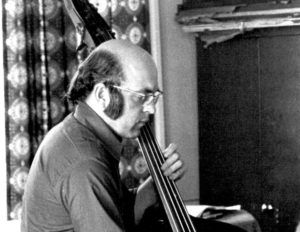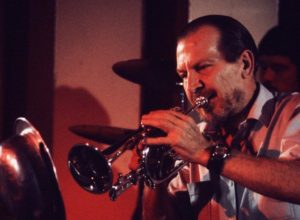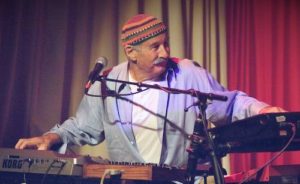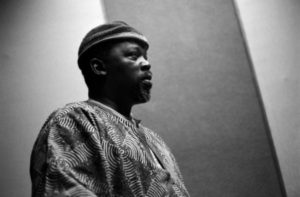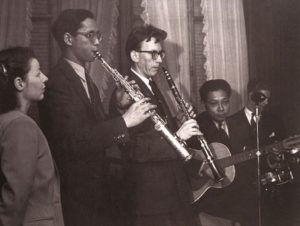Django Reinhardt
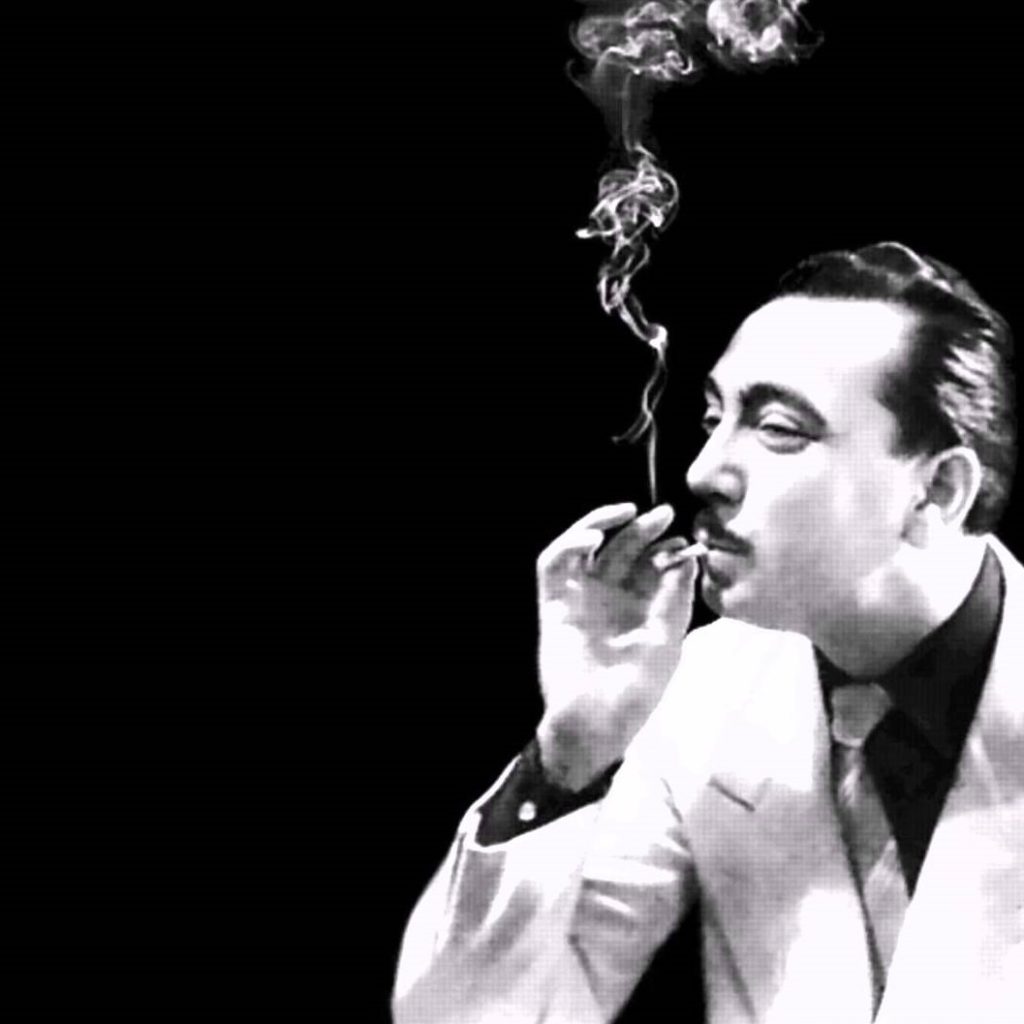
Django Reinhardt (1910-1953) is almost certainly the most influential jazz artist to have come out of Europe, with a whole sub-genre – ‘gypsy jazz’ – having developed out of his short career, particularly his work with Stéphane Grappelli and the Quintette du Hot Club de France.
Reinhardt was born in the Belgian village of Liberchies into a Romani family. He learned violin, banjo and then guitar from an early age. While still in their teens, he and his guitar-playing younger brother Joseph would busk as a duo in the courtyards of cafes and dance halls.
Reinhardt made his first recordings on banjo-guitar in 1928 accompanying accordionists and a singer. Still, his reputation was already sufficient, that he drew an offer from Jack Hylton to join his successful big band. In November of that year, however, Reinhardt nearly died in a caravan fire that left him walking with a cane, and without the use of the third and fourth fingers of his left hand. Fortunately, his pregnant wife was relatively unharmed, and a year later, his son Henri ‘Lousson’ was born, who himself would become an accomplished guitarist. Shortly after Henri’s birth, Reinhardt and his wife split up. While relearning his mastery of the guitar within his new physical limitations, he was introduced to jazz for the first time. The model of violinist Joe Venuti and guitarist Eddie Lang was an inspiration to Reinhardt and his new jamming partner, Stephane Grappelli, when they first started to work together in 1934 in sessions organised by bassist Louis Vola.
Together, Vola, Grappelli and Reinhardt formed a ‘Quintette’ with the support of Hugues Pannasie, Charles Delaunay and their jazz society, the Hot Club De France. Rounding out the group were Django’s brother Joseph and a third guitarist Roger Chaput. The quintet recorded more than 100 sides between 1934 and 1948, with Reinhardt and Grappelli constant members, even as other rhythm guitarists and double bass players came and went. Reinhardt also recorded with American musicians like Coleman Hawkins, Benny Carter and Larry Adler, and toured Europe, doing particularly well in Britain, playing the London Palladium in 1938. After the Second World War broke out, Grappelli elected to stay in the UK, while Reinhardt returned to France. Reinhardt continued to use the ‘Quintette’ name for groups that included clarinettists and drums, alongside the usual lineup. His son, Lousson, were among the rhythm guitarists who recorded with the group. Despite an official disapproval of jazz by the Nazi government in Germany, and persistent persecution of Romani across Europe, Reinhardt’s celebrity seems to have carried him through the war years, and he was still able to work.
In 1946, he reunited with Grappelli in London, recording with UK-based musicians like Coleridge Goode. Later that year, he travelled to USA for the first time, touring and recording with Duke Ellington, and performing at Carnegie Hall. He worked on a borrowed electric guitar, having been unable to bring his usual Selmer. This unfortunately makes the recordings a little less enjoyable than they should be. In 1949, he recorded with Grappelli one last time in Italy with local musicians.
in the early 1950s, Reinhardt would use an electric pickup more frequently, in gigs around Paris. Inspired by Dizzy Gillespie’s playing, he had also begun to incorporate bebop phrasing into his style. Before we had a chance to see where these new interests would take him, Reinhardt died of a brain haemorrhage at 43 years old. By the 1970s, the Quintette’s unique style of swing saw a resurgence of interest with a new generation of guitarists, inspired by Reinhardt, including Fapy Lafertin and Biréli Lagrène. Today, there are venues and festivals dedicated to the music, with some of his compositions like ‘Nuages and ‘Minor Swing’ forming the standard repertoire.
